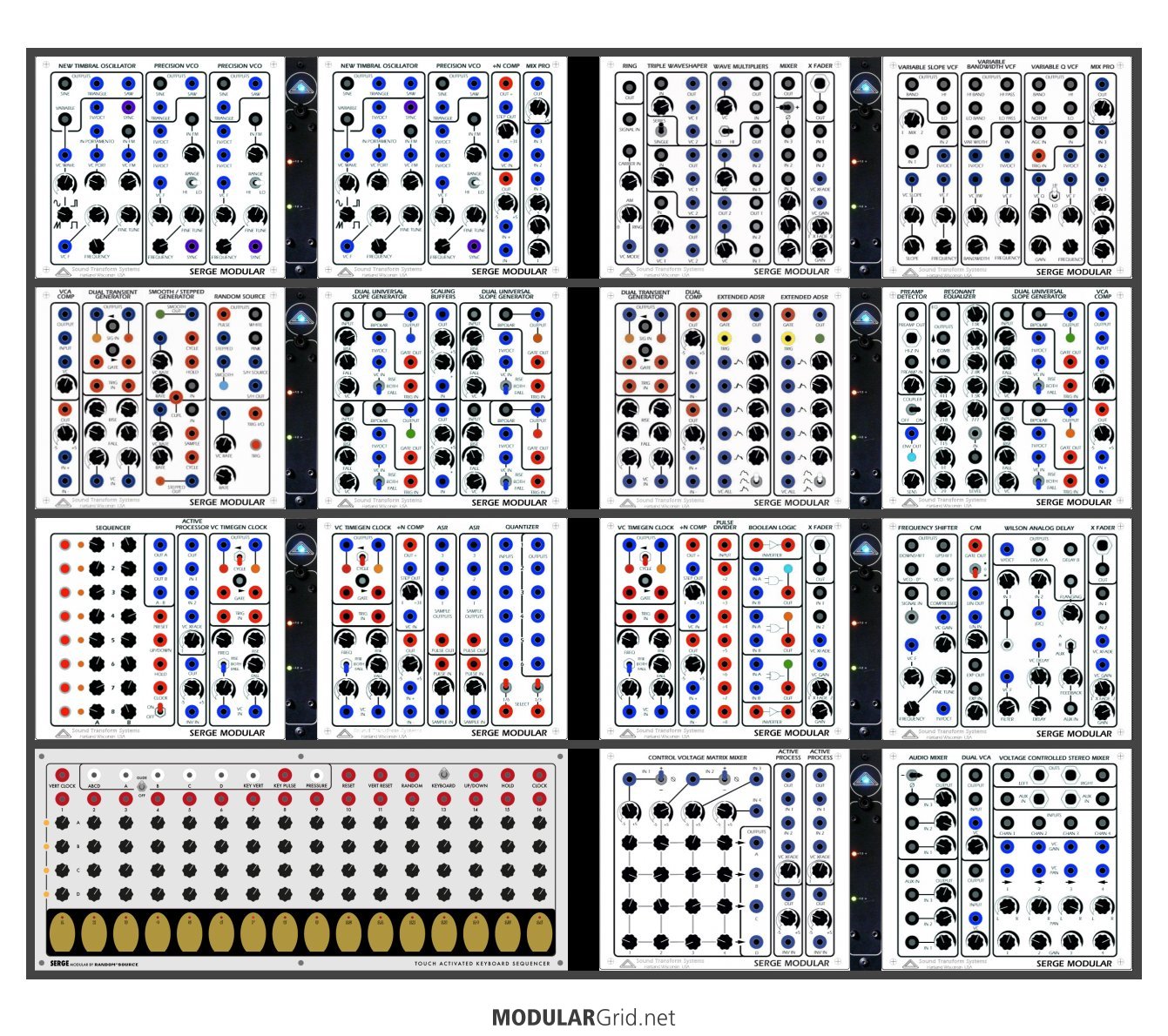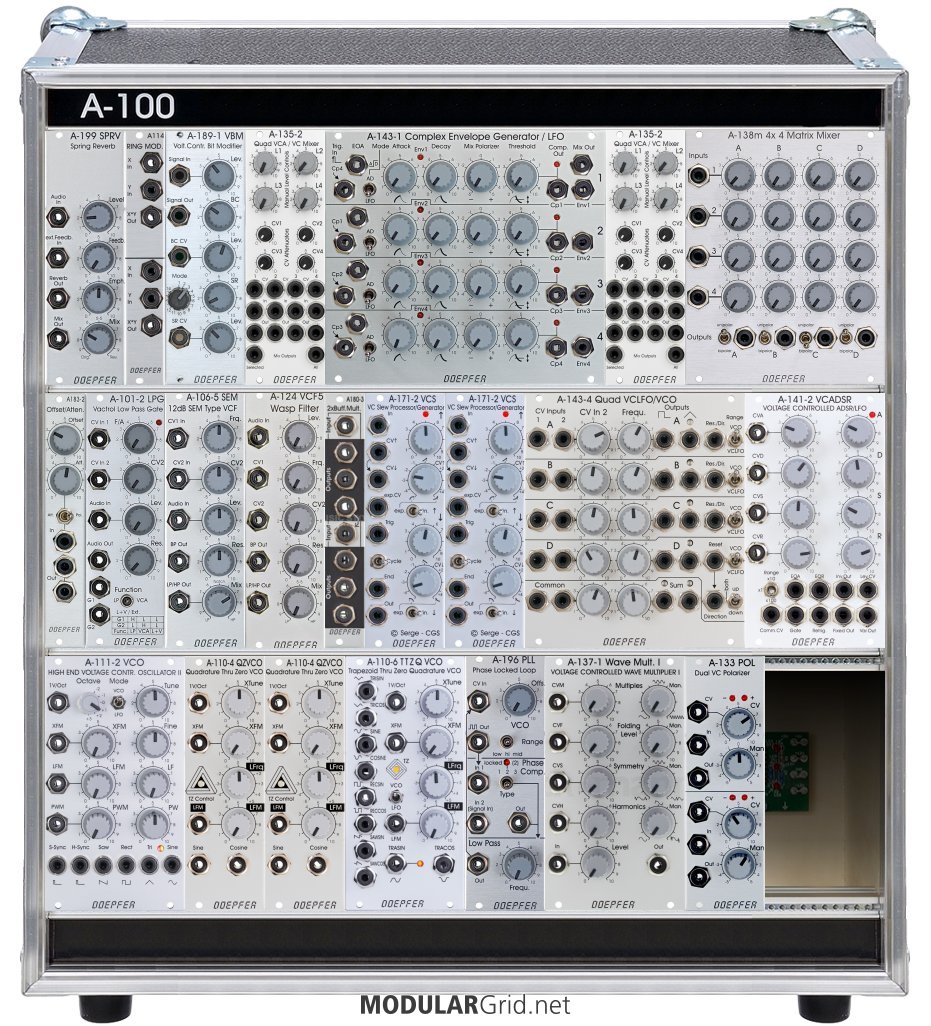Hm...about 7 this morning, I got hit with an idea about this thread. Kind of a nuts idea, but consider this:
So, you want something that's exploratory, that has an unlimited palette of sonic potential, that you'll live with and use for a LONG time without exhausting the fascination, and that's got a unified aesthetic. So, I got my dead ass out of bed, came up to the studio, and started cooking.
And cooking.
And then, it all pretty much clicked in place. Now, this blows your budget totally. By orders of magnitude, even. But it IS everything you're seeking. And it will take some time to assemble this, given the expense, unless you've got deeper pockets than most MGers. However...it's not Doepfer. It's not even Eurorack. This...

...is what I came up with. Now, bear with me for a bit...
This Serge system might seem pretty large. But it's not. Each "boat" (there's eight here) is only 17" long, maybe a couple of inches deep. And yes, you can get brackets for the Serge boats that allow pairs to fold up, so it's actually got a certain degree of portability to it. But it REALLY is at its very best when it's placed prominently in a nice space...the 21st Century postmodern equivalent to having a Steinway in the drawing room, I suppose. So this isn't simply an instrument for playing...it can be set up for generative music for gatherings, and it'll REALLY raise eyebrows with just its presence alone. So, aesthetic AF.
But as I noted before, that's not really the point. FUNCTION is the point. And frankly, you simply cannot get denser functionality than is found in Serge systems. Not even with much of Eurorack, either...because many Serge modules are capable of doing several different things depending on how you've got them patched. For example, while there's only five things labelled as "oscillators", the system here has many more things that can function as that, since even the LFO-type oscillators can track well into the audio range, and modules such as the Universal Slope Generator (yep, the core of the Maths...so the 2nd panel, 2nd row might just look a tad familiar) can also track into audio...so that one panel with two DUSGs is also "hiding" four more VCOs. Similarly, you might wonder where are all the VCAs? You only see four, right? Well...no. There's those, then the four more in the Stereo Mixer, then ALL of the modules marked as "Active Processor" are also VCA-able, plus the X-Faders work that way, too. And there's probably something else that'll do that as well...working with one of these is sort of like sculpting sound, not simply arranging signal chains.
Oh...yeah. No mults. Anywhere. Serges use single banana patchcords...which are stackable. So this thing might seem to have limitations until you realize that sources of audio or modulation can be spread across the entire system, more like building a spiderweb of signals. And really, it's more like audio and modulation sort of...break down with these systems, you don't have a clear division between the two. And that makes the potential for complex sonic exploration go right off the scale! But at the same time, you only have ONE cardinal rule: don't connect RED to RED. That's IT. Otherwise, anything connects to anything here, and functions of circuits can change just based on what you're feeding them with...and can they even change just by changing a signal's basic value: lower, something thinks its an LFO...but jack up the CV, and it's outputting audio. Or modulators turn into sound sources. And on and on...yeah, when I said "exploratory", I really meant it!
Now, yes, this isn't where this started. Not even CLOSE. And one stumbling block here is definitely the price tag. But even though this is a $28.5k budget imploder, the most expensive panel is the last one on the third row, and it's $3k because it has both the Frequency Shifter AND the coveted Wilson Analog Delay on there. Most of the rest (even the TKB Sequencer) float between around $1500-2000, which...if you think about it...if the Doepfer system I slapped together was around $7k, that amount would get 3-4 of the 8 space panels. If you can budget properly and spread the cost out over time, it really won't be that much of a hassle...it'll just take a while, with a hellacious payoff once it's all assembled.
But at this point, it probably looks utterly absurd. That's why, before rejecting this offhand, I think you should take some time, see what this can do...plus what it might do with some hands-on discovery time...and consider if this might not be what you were aiming at the whole time. Copy it to your account (and yes, it'll be fine with a non-Unicorn account), dive into the build, check out the different submodules, and start puzzling what you might be able to pull off with a system on THIS scale. It's not what you'd expected, sure...but surprises can be truly fun, and this'll have an infinite supply of surprises!






